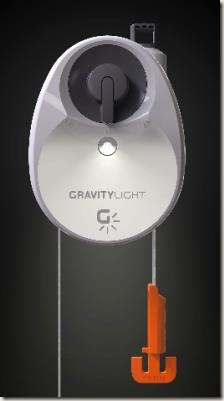I’ve mentioned before how LED lighting is the way forward – I use an LED strip instead of a table lamp for my PC workstation, and I’ve recently bought both  60W and 100W equivalent LED bulbs to replace annoying low-power fluorescent bulbs (which take time to reach full brightness, amongst other things).
60W and 100W equivalent LED bulbs to replace annoying low-power fluorescent bulbs (which take time to reach full brightness, amongst other things).
So I was interested in this article which explains how a British inventor has developed a lighting system for poorer countries where a weight is used to generate power for an LED array using gravity. It’s not so much the technology involved – which is straightforward – but the manner in which the inventor has gone about the task of developing a marketable product.
In the target countries for the light, kerosene and other fossil fuels are often used to provide lighting, and these are poisonous as well as dangerous in more obvious ways. With this new system, a weight of up to 12.5kg (consisting of sand, dirt, or rubble) powers a dynamo which can then provide light for up to 30 minutes on a single drop cycle. The units sell for only $10 each, and can be daisy chained to provide greater power levels.
The inventors bypassed the usual venture capitalists and went directly public, and raised $400,000 dollars through around 6,000 individual backers. If I’d have known about it, I’d have chucked a few bob in myself. It’s a brilliant idea.
The $10 price tag is still high – daily wages in some of the target countries are below $2 a day – but the savings in kerosene costs are around $100 inside two years, which means buyers would get a return on the investment very quickly.
The device can also be used to charge mobile phone batteries and other things.
You can read more at deciwatt.org.